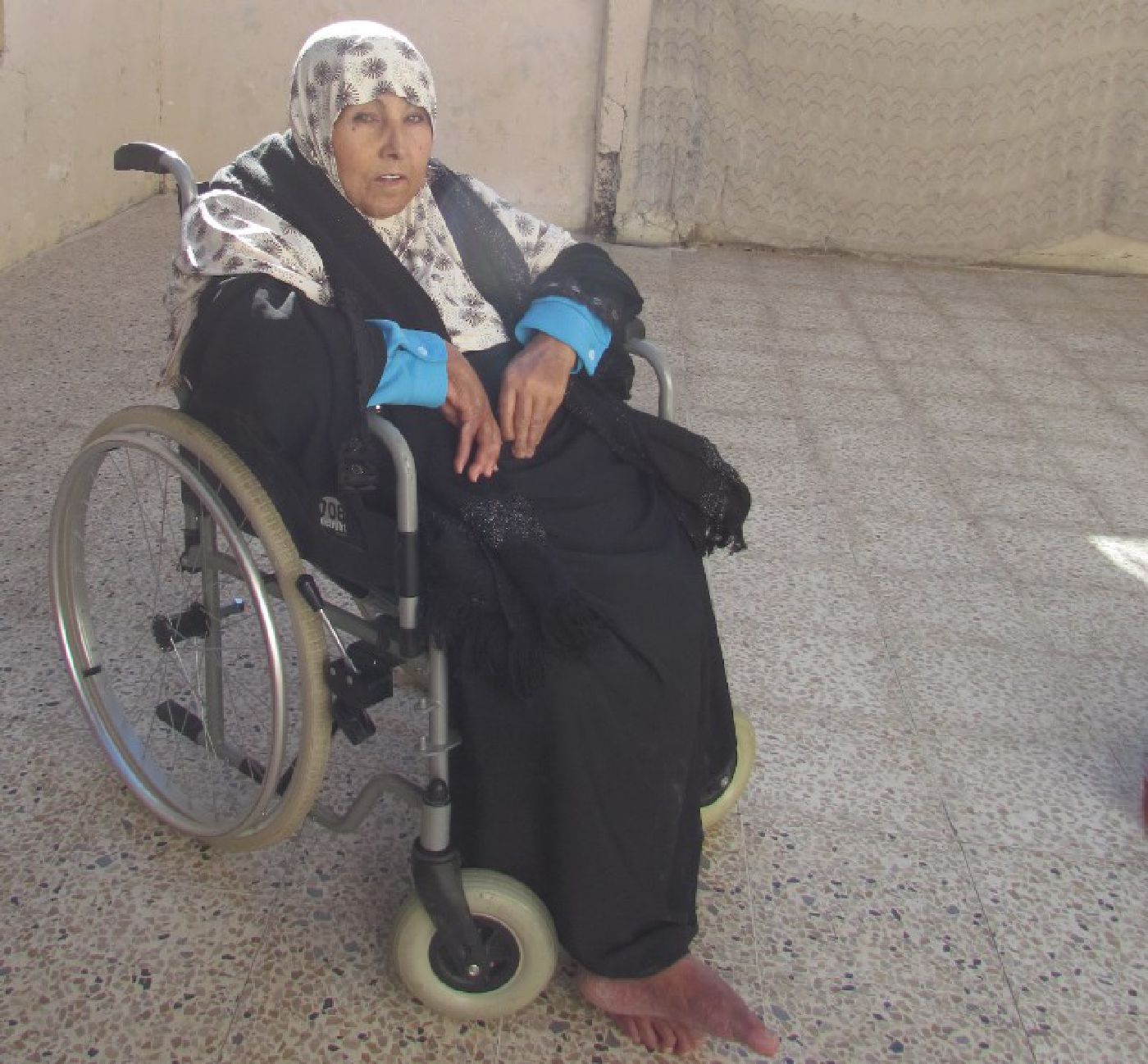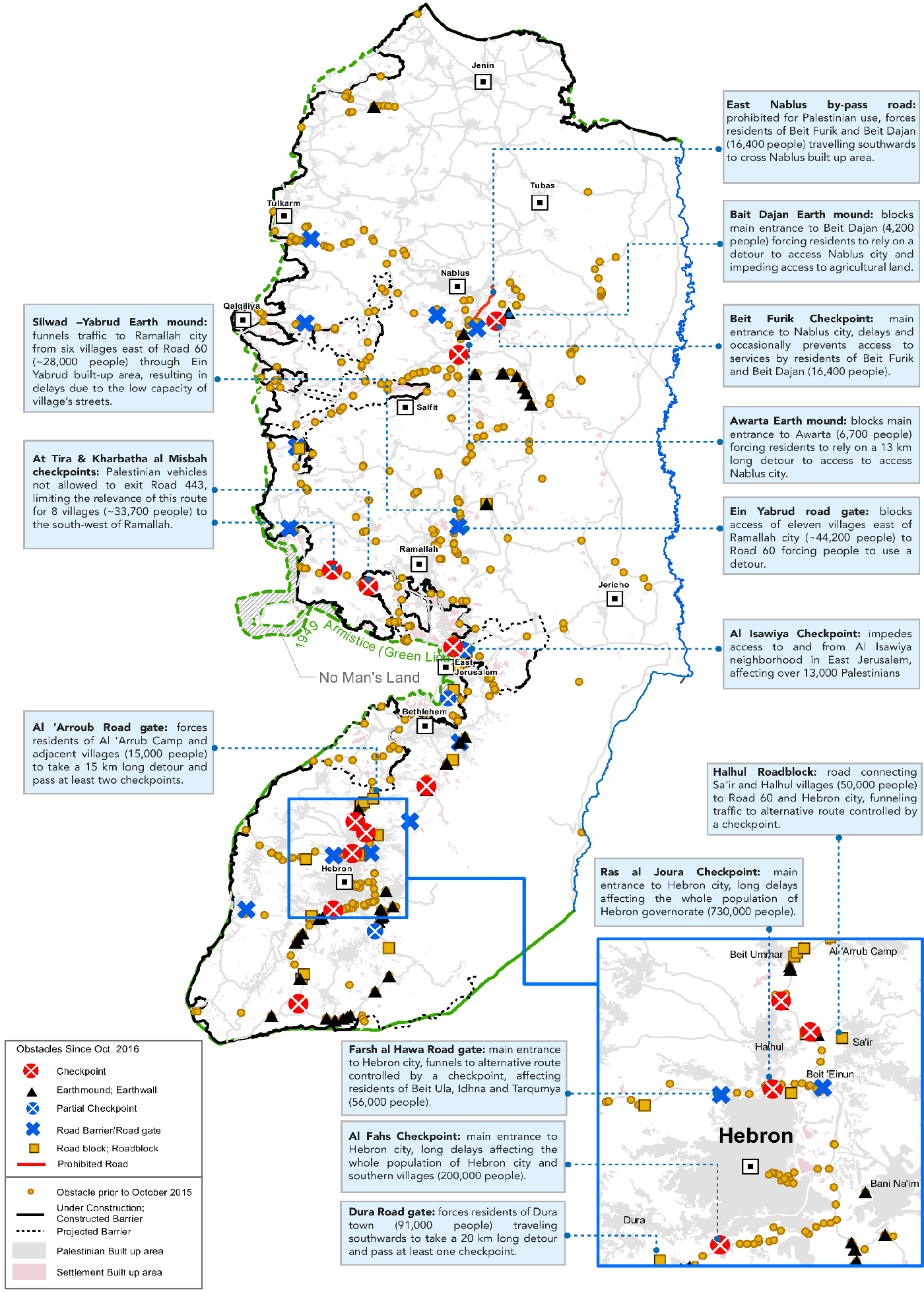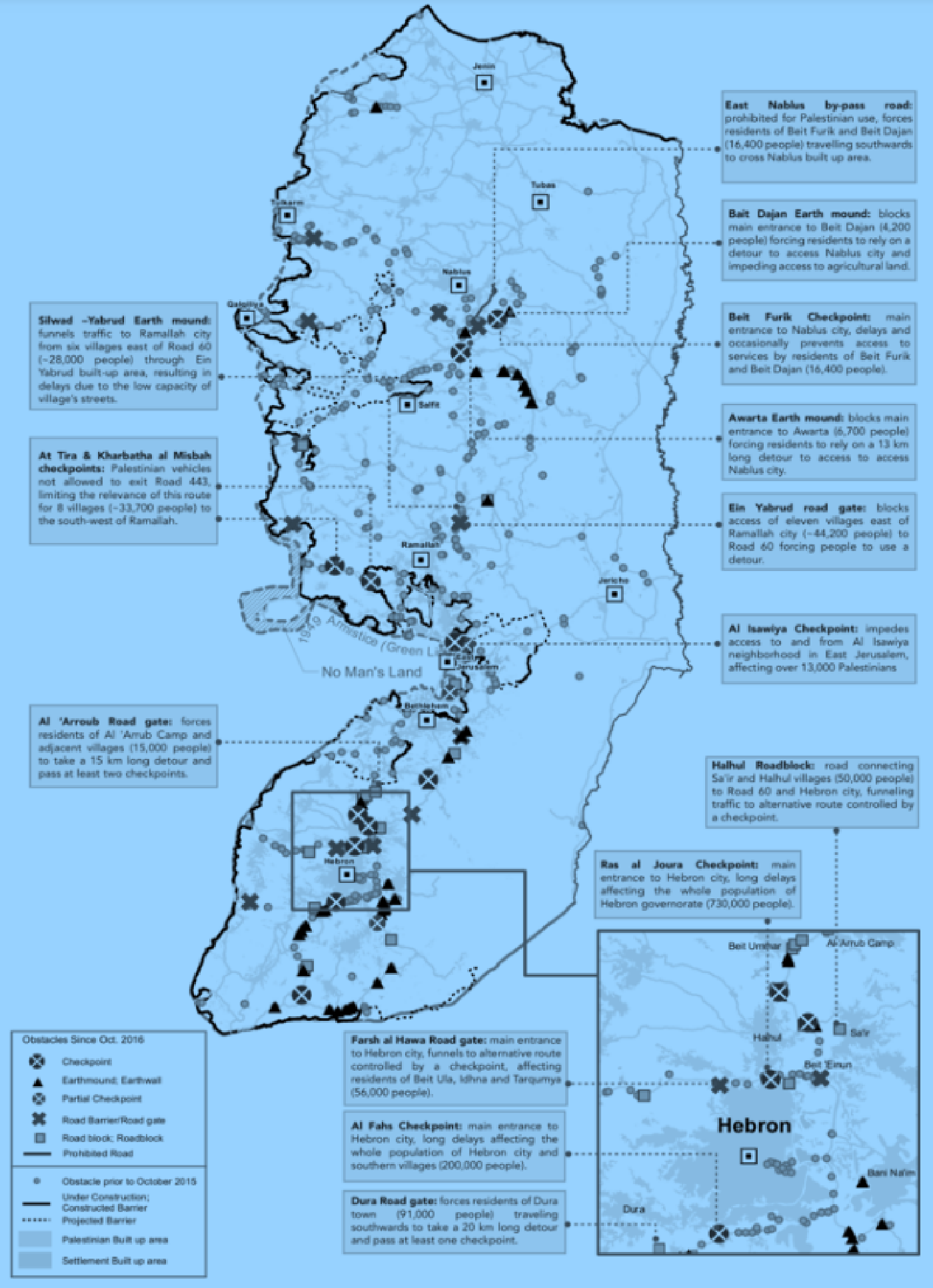
KHADRA
AL FAWWAR, HEBRON

AL FAWWAR, HEBRON
At times, the Israeli authorities increase their access restrictions inside the West Bank by erecting additional closures and checkpoints.
For example, following a decision adopted on 14 October 2015 by the Israeli Security Cabinet to address a wave of Palestinian violence, Israeli forces installed nearly a hundred new obstacles across the West Bank.
Most of these obstacles (57 per cent as of the end of 2015) were installed in the Hebron governorate, where many of the violent incidents took place.
Al Fawwar refugee camp, to the south of Hebron city and home to over 8,300 people, was severely hit by access restrictions following the installation of a gate closing the main route leading to Hebron city.
This junction was the scene of a number of stabbing and ramming attacks or alleged attacks.
Khadra, a mother of seven, suffers from kidney failure which impairs her mobility.
The closure restricted her ability to attend Hebron hospital, where she receives dialysis three times a week.
When these restrictions were imposed, she had to travel via Yatta, which takes about one hour longer than the regular route, in a special taxi that costs about NIS 240 ($60) per day.
The precarious state of the alternative route was a concern: ❝on one of the trips back from a dialysis session, I began bleeding due to bumps in the road and had to be treated at the camp clinic,❞ Khadra recalls. However, she pointed out that❝despite the occupation and the closures, I still love life.❞
The gate on the main entrance to al Fawwar camp has since then been opened.


This case was included in an article featured in OCHA's monthly Humanitarian Bulletin, January 2016 issue.
SHARE THIS PAGE!